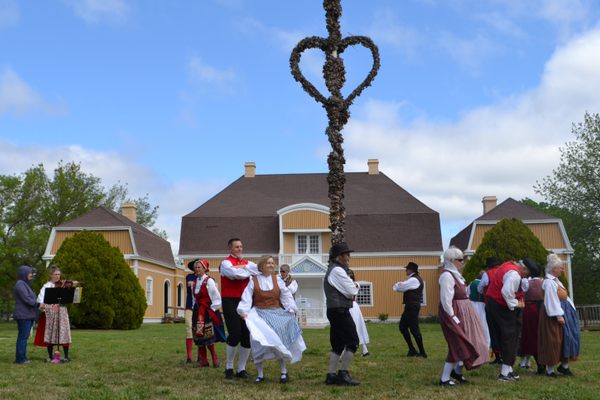About
Every time a major fair or exhibition ends, its pavilions are usually dismantled and become nostalgia, imprinted in memories and photos only. There are, however, some notable exceptions—in Knoxville, Tennessee, and Queens, New York, for example. The Eiffel Tower, built for the 1889 Universal Exhibition in Paris, should have been demolished, but instead became a symbol of the city known the world over.
The 1925 International Exhibition of Modern Decorative and Industrial Arts, also in Paris, was dedicated to the rich and sophisticated Art Deco style, but famed Swiss architect Le Corbusier submitted, with fellow architect Pierre Jeanneret, a project called Pavillon de l’Esprit Nouveau. His rejoinder to ornate Art Deco was a white geometric box, decorated with industrial production and built-in furniture, and intersected by a courtyard tree that passed through an open hole in the attic. Too essential and minimalist, many argued. But there was something else.
Although it resembled a single house, the Pavillon was intended as the prototype of a living module—an apartment within a large block. The idea behind the project was to balance the need for quality of the housing with the high population density of Paris. Adjacent to the pavilion there was a diorama depicting the Plan Voisin, the architect's proposal for a complete reorganization of the French capital. Much of the historic center would have been demolished in favor a new urban layout dominated by cruciform skyscrapers, wide green areas, and a network of perpendicular streets.
Unsurprisingly, the French despised the idea and did everything they could to hinder Le Corbusier. At first, they claimed there wasn’t enough space to house the pavilion but, given its small size, this excuse was unbelievable. So the architect was assigned a peripheral and isolated area of the exhibition and his work was concealed by a tall palisade. Thanks to one of his friends, the writer Gertude Stein, Le Corbusier was introduced to the Minister for National Education, who intervened to restore the construction to view. Le Corbusier's idea of redesigning Paris was never realized and, after the exhibition, his building was torn down, but not forgotten.
The Pavillon de l'Esprit Nouveau can be seen today, not in Paris but in Bologna, Italy. In 1965, architects Giuliano and Glauco Ghisleri met José Oubrerie, one of Le Corbusier's collaborators. They discussed the possibility of rebuilding the pavilion in the Emilian city. The work was carried out in 1977 in front of the entrance to the Bologna Fair, not far from the towers built by another famous architect, Kenzo Tange, which house the headquarters of the Emilia-Romagna region. The new version of the modern model house was built in only three months and is faithful to the original. It reproduces the housing unit, including the large tree that Le Corbusier had incorporated into the balcony-garden, the furniture, and the diorama where one can see a representation of the urban plan that caused such a stir in 1925.
Related Tags
Know Before You Go
Pavillon de L'Esprit Nouveau is in a public area and always accessible from the outside. Bologna Welcome, the Bologna Visitors Bureau, often plans free openings and guided tours, but there's no fixed schedule. It's best to contact them in advance.
Flavors of Italy: Roman Carbonara, Florentine Steak & Venetian Cocktails
Savor local cuisine across Rome, Florence & Venice.
Book NowCommunity Contributors
Added By
Published
July 15, 2020
Sources
- https://en.wikipedia.org/wiki/Pavillon_de_l%27Esprit_Nouveau
- https://madparis.fr/francais/musees/musee-des-arts-decoratifs/dossiers-thematiques/l-exposition-internationale-des-arts-decoratifs-et-industriels-modernes-de/liste-des-pavillons/pavillon-de-l-esprit-nouveau/
- https://www.lescouleurs.ch/en/journal/posts/pavilion-de-lesprit-nouveau/




























